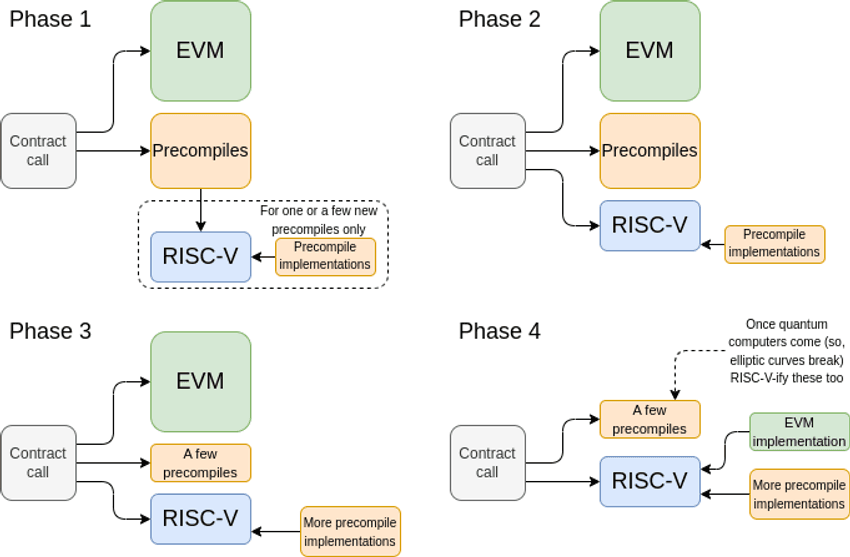Ethereum Sets Sights on a Simpler, Safer, Faster Future
Ethereum’s core developers are aiming to reshape the protocol from the ground up. A new proposal dubbed “Lean Ethereum” has emerged, laying out a 10-year roadmap to make the layer-1 blockchain quantum-resistant, easier to build on, and capable of reaching 10,000 transactions per second (TPS).
Proposed by Ethereum Foundation researcher Justin Drake, the plan aims to strip away technical bloat while reinforcing security at every layer—execution, consensus, and data availability. “The idea is to create a network that’s not only leaner, but also future-proof,” Drake emphasized in a recent internal update.

Source: Lean Ethereum Initiative
Zero-Knowledge VMs and Quantum Resilience
At the heart of the plan is a proposal to use zero-knowledge-powered virtual machines, or zkVMs, which allow transactions to be verified without revealing their data. This makes Ethereum more private and secure, especially in the face of looming threats from quantum computing.
Drake suggests that these zkVMs would quantum-proof the execution layer, giving the protocol the ability to survive future computational advances. The cryptographic shift would fortify Ethereum’s transaction validation while ensuring that security does not come at the cost of decentralization or transparency.
Leaning on Simplicity: RISC-V and Sampling
To cut down on Ethereum’s notorious technical complexity, Drake proposes adopting RISC-V, an open and minimal instruction set architecture. The goal: simplify the consensus layer, make it easier for developers to engage with, and reduce potential attack vectors in the system.
Another major shift involves data availability sampling (DAS). Rather than requiring every node to download full blocks, DAS lets nodes verify the authenticity of blocks by checking random samples. This could significantly reduce the resource load on Ethereum nodes while maintaining network integrity.
Buterin and Others Echo the Call for Change
Ethereum co-founder Vitalik Buterin has long supported this push for simplification and sustainability. In a May update, Buterin said Ethereum’s “excessive development expenditure” has created too many security risks and left the ecosystem over-engineered.
He’s also voiced support for RISC-V, arguing that moving away from complex virtual machines like EVM could speed up the network and make Ethereum more robust.
Other crypto leaders are also weighing in. XinXin Fan, head of cryptography at IoTeX, recently endorsed hash-based zero-knowledge proofs as a practical path to quantum resistance, highlighting the need for low-latency, user-friendly approaches.

Source: Vitalik Buterin
The Road Ahead: Can Ethereum Deliver?
Ethereum’s “Lean Plan” may span a decade, but it comes at a time when scalability, security, and sustainability are no longer optional. The proposal emphasizes that future Ethereum upgrades must not only enable higher throughput, but also ensure the protocol stays competitive, decentralized, and resilient in an evolving tech landscape.
If successful, the roadmap could make Ethereum as lean and secure as Bitcoin, but with the added bonus of programmable functionality and robust scaling mechanisms. Whether Ethereum can balance innovation with simplicity remains the big question—but it’s a bet the core team is clearly willing to make.



